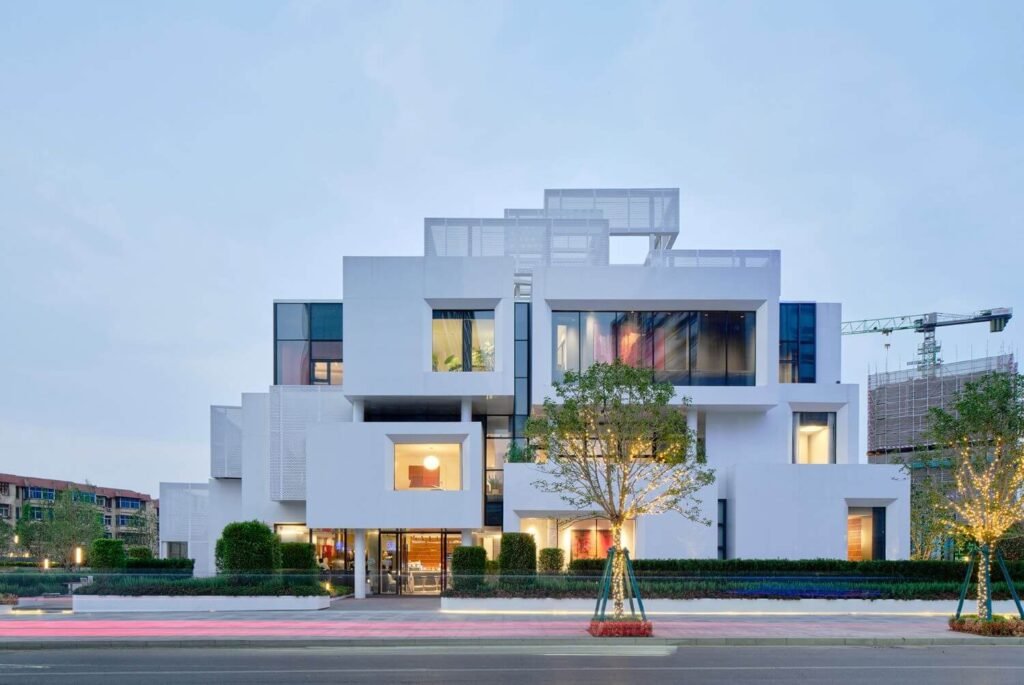Editing is a crucial step in the process of architectural photography. Proper editing can enhance the details, correct distortions, and bring out the true essence of the architectural design. Here are some essential editing tips to help you elevate your architectural photography.
Understanding the Basics
1. Start with a Good Raw File
Shoot in RAW:
Always shoot in RAW format to capture the maximum amount of detail and flexibility in post-processing. RAW files contain more data than JPEGs, allowing for better adjustments in exposure, white balance, and more.
2. Use the Right Software
Editing Tools:
Popular software for editing architectural photos includes Adobe Lightroom, Photoshop, and Capture One. These programs offer advanced tools for perspective correction, color grading, and detail enhancement.
Essential Editing Techniques
1. Perspective Correction
Straighten Lines:
Use tools like Lightroom’s Transform panel or Photoshop’s Perspective Warp to straighten vertical and horizontal lines. This is crucial for maintaining the integrity of the architectural design.
Manual Adjustments:
If automatic corrections don’t give the desired result, use manual adjustments to fine-tune the perspective. Pay attention to the lines and shapes to ensure they are accurately represented.

2. Adjusting Exposure and Contrast
Balanced Exposure:
Ensure the exposure is balanced across the image. Use the exposure slider to brighten or darken the image as needed. Avoid overexposure or underexposure to retain details in both the highlights and shadows.
Enhance Contrast:
Increase contrast to make the architectural features stand out. Be careful not to overdo it, as too much contrast can result in loss of detail in the highlights and shadows.
3. Fine-Tuning White Balance
Correct Colors:
Adjust the white balance to ensure that the colors in your photo accurately represent the building’s materials and the overall atmosphere. Use the white balance tool to remove any color casts and achieve natural-looking colors.
4. Highlighting Details
Sharpening:
Use sharpening tools to enhance the details in the architecture. Be subtle with sharpening to avoid creating unnatural halos or noise.
Clarity and Texture:
Increase clarity and texture to emphasize the fine details and textures of the building materials. This helps in bringing out the intricate designs and craftsmanship.
5. Color Grading
Consistent Color Scheme:
Apply a consistent color grading to maintain a cohesive look across your architectural photos. Adjust the hues, saturation, and luminance of specific colors to enhance the overall aesthetic.
Selective Adjustments:
Use selective adjustments to enhance specific areas of the image. For instance, you can increase the saturation of the sky or the warmth of the building’s facade while keeping other parts neutral.
6. Correcting Lens Distortion
Lens Correction Profiles:
Most editing software includes lens correction profiles that automatically correct distortions caused by wide-angle lenses. Apply these profiles to straighten lines and correct any barrel or pincushion distortion.
7. Enhancing Lighting
Dodge and Burn:
Use dodge and burn techniques to selectively lighten or darken areas of the image. This helps in creating depth and drawing attention to specific architectural features.
Vignetting:
Apply a subtle vignette to draw the viewer’s eye towards the center of the image. Be cautious not to overdo it, as strong vignetting can distract from the overall composition.
8. Removing Distractions
Spot Removal:
Use spot removal tools to eliminate any unwanted elements or distractions from the image. This includes sensor dust, stray objects, or people that detract from the architecture.
Clone Stamp and Healing Brush:
These tools are useful for more complex retouching tasks. Use them to seamlessly remove larger distractions or to fix any imperfections in the building’s surface.
Advanced Editing Techniques
1. HDR Processing
High Dynamic Range (HDR):
Combine multiple exposures to create an HDR image. This technique is useful for capturing the full range of tones in high-contrast scenes, such as building exteriors with both bright skies and dark shadows.
2. Focus Stacking
Increased Depth of Field:
For detailed architectural shots, use focus stacking to combine multiple images taken at different focus points. This ensures that all parts of the image, from foreground to background, are in sharp focus.
3. Panoramic Stitching
Wide-Angle Views:
For capturing wide architectural scenes, use panoramic stitching to combine multiple images into a single wide-angle view. This technique is useful for photographing large buildings or urban landscapes.
Practical Tips for Efficient Editing
1. Develop a Workflow
Consistent Process:
Establish a consistent editing workflow to ensure efficiency and quality. Start with basic adjustments, move to more advanced corrections, and finish with final touches.
2. Use Presets
Time-Saving Presets:
Create or use presets for common adjustments. Presets can save time and provide a consistent look across your architectural photos.
3. Keep Original Files
Non-Destructive Editing:
Always keep your original RAW files and use non-destructive editing techniques. This allows you to revert to the original image or make additional adjustments without losing quality.
Conclusion
Editing is a vital step in architectural photography, allowing you to enhance the beauty and intricacy of the design. By mastering these editing techniques, you can correct perspective, adjust lighting and colors, highlight details, and remove distractions, creating stunning images that truly capture the essence of architectural design. Whether you are a professional photographer or an enthusiast, these tips will help you elevate your architectural photography to new heights.

